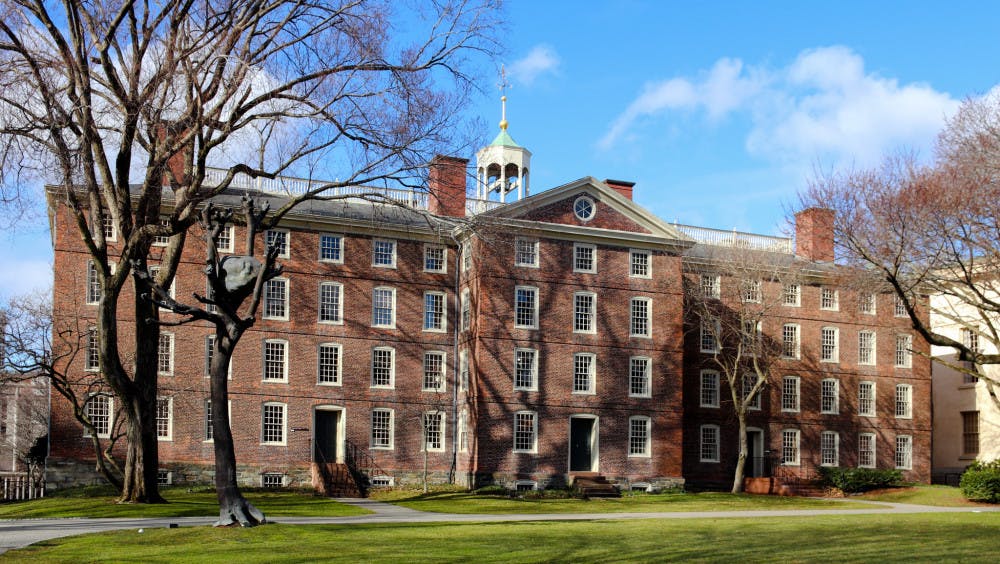President Christina Paxson P’19 addressed concerns around implementing a denser on-campus housing model for the spring 2021 semester and hinted at “short term, concrete actions” the University plans to take to make the Department of Public Safety more equitable at a faculty meeting Tuesday.
Spring semester updates
On Oct. 29, Paxson announced the University’s plan to offer an in-person residential experience to undergraduate students from every class year in the spring, The Herald previously reported.
She stressed that Brown’s initial plans are subject to change. “We’ve done well this fall, but we know that ... December could be really difficult, and the first part of January could be really difficult,” Paxson said.
As of Nov. 5, the University’s asymptomatic testing program returned 27 positive test results in the past three weeks, while eight community members tested positive from Oct. 21-23, a higher positivity rate than any other three-day period, The Herald previously reported.
Paxson said that in the spring, the University will continue to house students in single rooms only. Brown will have room to house 3,176 students in single rooms or rented apartments, while also allowing for additional quarantine and isolation space.
Paxson referenced her observations of other universities to contextualize her decision to continue housing students exclusively in single rooms. “Many universities that are doing what Brown does, which is testing twice a week, (have) seen very little spread of COVID in dorms — even with double rooms,” Paxson said, citing Cornell as an example. But she also acknowledged that other institutions like Tulane, which houses some students in doubles, have seen some viral spread in dorms.
In addition to health and safety concerns, Paxson also said it is important for students to have their own space while taking remote courses on campus. “Students are taking their remote courses from their dorms, and it’s really hard to do that if you have more than one person in the room,” Paxson said.
Dorms are not the only issue with increasing on-campus capacity, Paxson added. The University has enough classroom space to carry out some in-person classes next semester, she noted, but the University’s main concern is ensuring that it has enough space in libraries and other campus buildings for indoor gatherings while maintaining safe social distancing protocols.
Paxson anticipates a “melt” resembling the experience of last summer, in which some students who initially expressed interest in returning to campus for the fall semester ultimately decided to study remotely. “Depending on the health situation, we may see that happen again,” she said.
Brown University Community Council updates
Over the spring and summer, the University conducted a standard review of DPS. “One thing that came out of that external review that was interesting was the recommendation that we hold a community discussion to reimagine what we want campus (safety) to look like at Brown,” Paxson said.
The Brown University Community Council, which is made up of faculty, staff, students, alumni and local community members, strives to facilitate discussions on “issues of interest to the broad community,” according to a slideshow presented at the meeting. This year, the BUCC plans to focus on ensuring that Brown’s approach to public safety is inclusive and equitable, Paxson said. On Nov. 18 at 4:00 p.m., the BUCC will hold a public meeting, she announced, during which Chief of DPS Mark Porter and Executive Vice President for Policy and Planning Russell Carey, who oversees DPS, will give an overview of the department’s structure and activities.
Paxson added that the meeting will include some “very welcomed announcements about short term, concrete actions we are planning to change how DPS and campus life operate together.”
After George Floyd’s death this summer, which catalyzed protests nationwide against police brutality in the United States, “we want to make sure that Brown’s approach to public safety is truly equitable and that it supports our students and members of our community from all backgrounds,” Paxson said.
Grasping at the Root, a student coalition formed over the summer, has called for the abolition of DPS as part of its demands relating to policing and carcerality at the University.
Other faculty meeting updates
Paxson and administrators also discussed the presidential election and its potential impacts on higher education. “The current (presidential) administration has not been friendly to higher ed,” Paxson said.
Near the end of the meeting, Provost Richard Locke P’18 announced the newly-chosen members of the Ad Hoc Committee on Promoting Long-term Financial Health and Sustainability, which Locke organized earlier this fall. The committee aims to “explore options to leverage Brown’s assets in technology, teaching and research to generate additional revenue and develop strategies for slowing the growth of expenses through the adoption of new operational practices,” according to the slideshow. The committee, according to the slideshow, will include administrators, faculty and staff representatives, undergraduate students Akilesh Raman ’22 and Jordan Kei-Rahn ’21, as well as graduate students Alastair Tulloch GS and Ella Kirsh GS.
Correction: A previous version of this article stated that the next BUCC meeting would be Nov. 14 when it will in fact be Nov. 18. The Herald regrets the error.

ADVERTISEMENT




